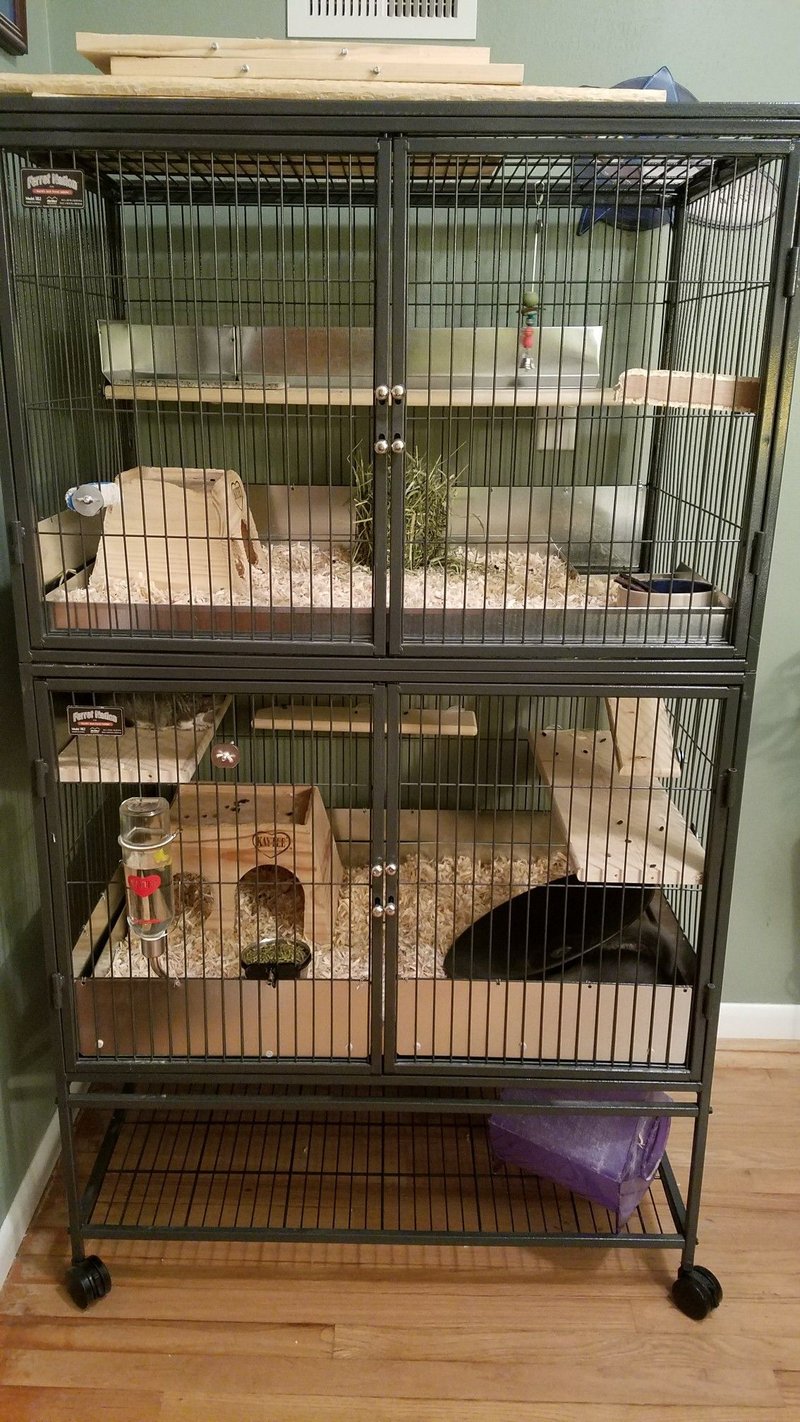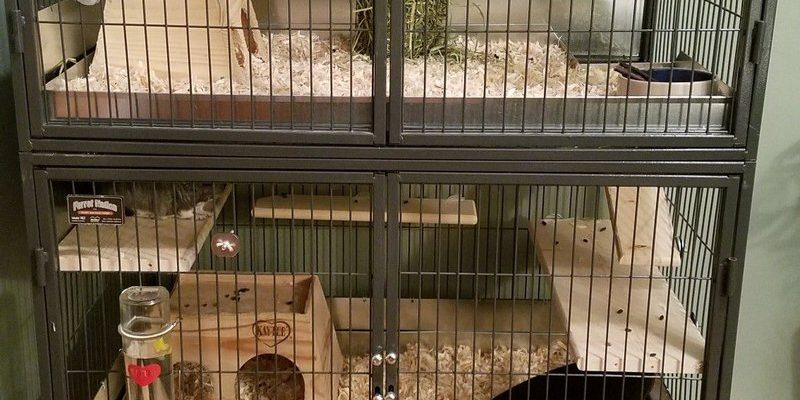
Caring for these critters isn’t just about feeding and cleaning—though that’s important too! It’s about providing them with a rich environment that meets their specific needs. Think of it as setting up a tiny, furry apartment. You wouldn’t just throw a sofa in a room without considering what else it needs, right? So, let’s dive into how to create the best home for your chinchilla, from what to feed them to how to keep them looking their best.
Understanding Your Chinchilla’s Diet
When it comes to a standard grey chinchilla’s diet, think of it like a well-balanced buffet—lots of options, but only the right choices! Chinchillas are herbivores, which means they thrive on plant-based foods. The foundation of their diet should be high-quality hay, specifically timothy hay, which is packed with fiber and essential nutrients. Fiber keeps their digestive system running smoothly and helps prevent health issues down the road.
In addition to hay, you can include small amounts of pellets designed for chinchillas. Look for pellets made specifically for them, as these are formulated with their unique nutritional needs in mind. You might want to avoid any mixes with seeds or dried fruits because they can be too sugary. A little too much sugar and your chinchilla might face health problems, like obesity.
Occasionally, you can treat your chinchilla to fresh vegetables. Leafy greens like kale or parsley are good choices, but make sure to introduce any new food slowly. It’s a bit like trying a new dish at a restaurant—you don’t want to overwhelm your taste buds! If you notice any tummy troubles, go back to the basics and stick to hay and pellets until things settle down.
Setting Up the Perfect Cage
Creating a comfortable cage for your chinchilla is crucial. Think of it as their sanctuary, a cozy nook where they can feel safe and happy. Ideally, you want to get a multi-level cage. Chinchillas are natural climbers and love to explore. A cage that’s at least 3 feet tall with multiple levels gives them room to hop around and enjoy their surroundings.
Cage materials are important too. Avoid cages made of plastic, as chinchillas are known to chew on anything in sight. A sturdy metal cage is your best bet. Make sure the bars are close enough together (around 1 inch apart) so they can’t escape, but not so narrow that they get stuck.
Inside the cage, provide hiding spots and chew toys. Natural wood toys are great options, and you can also add a few small tunnels for them to explore. Remember, chinchillas need a dust bath to keep their fur clean and healthy. Set up a small dish with chinchilla dust (not sand) and let them roll around. It’s their version of a spa day!
Grooming Needs of Your Chinchilla
Chinchillas are pretty clean animals, but they do need some grooming to keep their luxurious fur in top shape. Their dense coat doesn’t allow moisture to escape easily, so bathing them in water is a no-go. Instead, a regular dust bath is essential. Provide them with a shallow dish of chinchilla dust a couple of times a week. They’ll love rolling around in it, and it helps keep their fur squeaky clean.
You might be wondering how often you need to brush your chinchilla. A simple brush through their fur once a week is usually enough to remove loose hairs and keep their coat looking healthy. Just be gentle—think of it as brushing out tangles in your own hair. If you encounter any mats, don’t pull; instead, use your fingers to gently tease them apart.
Be mindful of their nails too. Regular nail trimming is important, as overgrown nails can hurt your chinchilla and affect their ability to hop around. Try to get your chinchilla used to this early on. Just like how you might take a friend to the nail salon, start with brief sessions so they feel comfortable with the process.
Creating a Comfortable Environment
Besides their diet and grooming, creating a cozy environment is key to keeping your chinchilla happy. Think about the temperature—chinchillas can’t handle heat well, so keep their cage in a cool room, ideally between 60°F to 70°F. They love their space to be well-ventilated but also secure from drafts.
Offer them plenty of enrichment. You’ll want to rotate toys to keep their environment interesting. Chinchillas can get bored easily, and boredom can lead to destructive behavior. You might even consider creating an obstacle course! Just ensure that any toys or materials you use are safe. Avoid anything treated with chemicals or paint, as chinchillas love to chew.
Another great idea is to let your chinchilla have supervised time outside its cage in a safe area. Set up a playpen or a small room where they can explore while you keep an eye on them. This time outside their cage can be a fun way to bond and help them burn off some energy.
Common Health Issues to Watch For
Like any pet, chinchillas can face their share of health issues. One common problem is dental issues. Since their teeth never stop growing, they need plenty of chew toys to keep them trimmed. If you notice your chinchilla having trouble eating or excessive drooling, it’s time for a vet visit.
Another concern is digestive problems. If your chinchilla stops eating or has unusual droppings, this can be a sign of trouble. Remember that a high-fiber diet is crucial for preventing gastrointestinal issues.
Lastly, don’t ignore signs of stress! Chinchillas can be sensitive to loud noises or changes in their environment. If your furry friend seems unusually shy, hides a lot, or shows signs of aggression, it might be time to reassess their surroundings.
Bonding With Your Chinchilla
Building a bond with your chinchilla takes some time and patience—it’s not a sprint, it’s a marathon. Start by spending quiet time near their cage, letting them get used to your presence. You can talk softly to them or even read out loud.
When your chinchilla seems comfortable, you can try offering treats from your hand. Just like winning the heart of a new friend, a little patience goes a long way! Over time, they may allow you to pet them or even sit on your shoulder for a little adventure.
You might consider setting a routine for playtime. Consistency helps your chinchilla feel safe and secure. A little daily handling can help them become more comfortable with you and trust you more. Just keep an eye on their mood—if they seem anxious, give them some space.
Summary
Caring for a standard grey chinchilla might seem a bit overwhelming at first, but remember it’s all about taking one step at a time. From their unique dietary needs to creating a cozy cage setup, and keeping them groomed, it’s a rewarding journey that will lead to a wonderful bond. Just like any great relationship, it requires effort, patience, and lots of love.
With the right diet, a safe and stimulating environment, and regular grooming, your chinchilla will thrive and bring endless joy into your life. Just remember to enjoy the process, learn from your chinchilla, and celebrate those little moments of connection. Happy chinchilla parenting!

